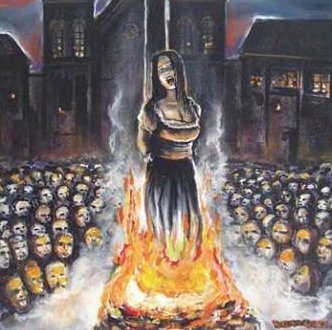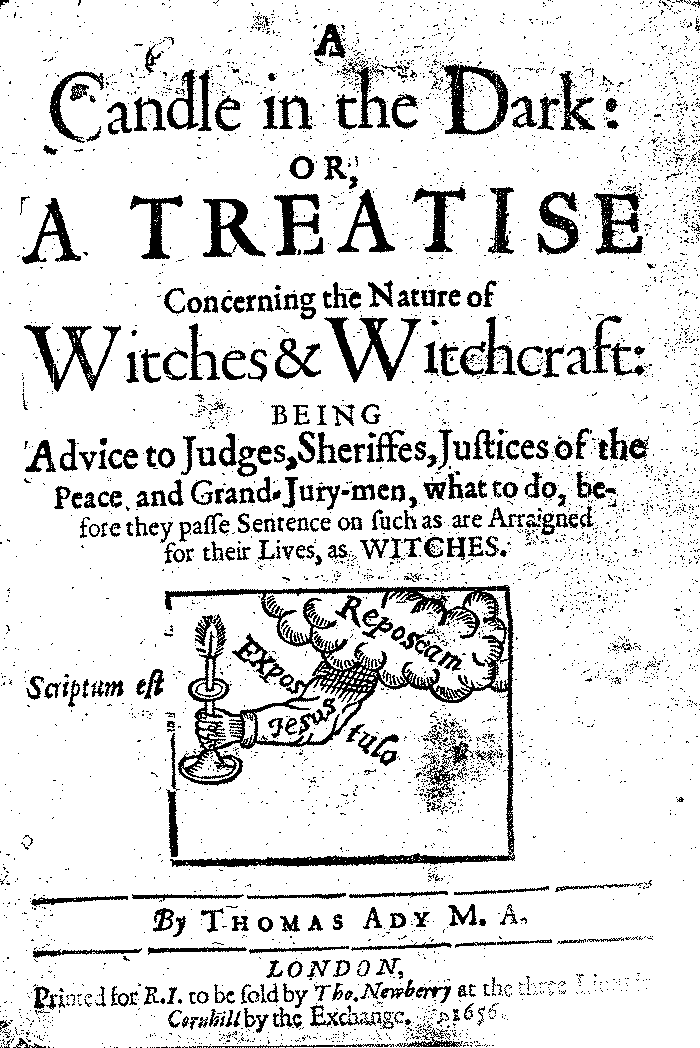COLCHESTER, U.K. – The subject of witch hunts in the UK are a perennial topic of fascination to researchers and indeed reporters: the East Anglian Times this week featured the story of a 16 year old girl, tried as a witch because she was ‘too beautiful,’ who is still said to haunt the village of Denham today. Meanwhile in Orkney, a memorial to the witches who were executed there has now been unveiled at a ceremony in March (the Wild Hunt featured a report on this last year). And a new exhibition, ‘A Coven A Grove A Stand’, from London-based artist Susan Pui San Lok, is running now at the art gallery and cultural centre of Firstsite in Colchester, not far from the scene of Witchfinder General Matthew Hopkins’ depredations.
So what is the background to these recent news stories and arts projects? The history of the witch trials in Britain is relatively well researched, but complicated by the loss of records – particularly in Scotland, where we have a ballpark number of some 1100 to 2500 executions, compared to 400 to 1000 in England (there is a rough consensus of 500 people killed). Only Wales has a solid figure, of 5 people killed. Unlike Europe, people accused of witchcraft in Britain were hanged or drowned rather than burned.

Of these unfortunate people, some had actually confessed to practising witchcraft, and may either have been delusional and believed that they had some form of magical ability, or had actually been undertaking magical practice. Caution and care must exercised in the evaluation of practice: cunning folk survived relatively unscathed through the few hundred years of the witch trials. What’s the difference? Basically, witches were held to be evil. They were said to practise black magic and consort with the Devil. Cunning folk, on the other hand, were perceived as good, engaging in benevolent magic and helping those who have been cursed by witches. The definition of witchcraft was whether a practice resulted in harm or was intended to cause harm.
In addition to this, a number of people accused of witchcraft were probably Catholic heretics or had land coveted by locally powerful individuals (Pendle’s Agnes Nutter, a wealthy landowner, most likely falls into both categories). They may also have been the target of local jealousies – the young girl whose ghost is said to haunt Denham is probably one of these. She is said to have cast a spell on local men and the instigators of her trial were their wives and girlfriends. Richard Heygate and Philip Carr-Gomm, in The Book of English Magic, comment that,
“…competent, middle-aged, middle-class women were more often picked on, usually because they had a reputation for a hot temper and a sharp tongue.”
Matthew Hopkins (born c. 1620) remains notorious as the Witchfinder General – a self-conferred title which nevertheless, in the chaos of the English Civil War, saw him responsible for the trials of around three hundred women in the 1640s and at least a hundred deaths. (His name is likely to conjure up the image of some stern, elderly fanatic, but Hopkins was young – he was only twenty-seven when he died).

[Nye, Edgar Wilson “Bill” (1850-1896) [Public domain]
With his associate John Stearne he set up a witch-hunting operation throughout East Anglia. Ronald Hutton attributes some of Hopkins’s success to the Civil War itself and the collapse of the assize system: normally, anyone accused of witchcraft would have been tried at the assizes. The war left a power vacuum and Stearne and Hopkins seem to have taken full advantage of it. Both claimed to have been hired by Parliament, and both made a considerable amount of money from witch-hunting along with their female accomplices. In fact, Parliament expressed considerable concern about their activities. A report from the area to Parliament mentions, “as if some busie men had made use of some ill Arts to extort such confession.”
Their investigations were based on the Daemonologie of King James and their methods remain familiar to most people today. These are what people tend to think of when they hear about the witch trials: ducking a witch to see if she floated, pricking her (it’s usually ‘her’) with a trick needle to see if she bleeds, and so on.
Not everyone blindly went along with this. One of Hopkins’s principal opponents around 1646 was a vicar: John Gaule of Great Staughton, who preached against witch-hunting. Then Hopkins and Stearne came to the attention of the justice system themselves, but they prudently retired before they came to court. Hopkins died in 1647, probably of tuberculosis, although there is a legend that he was subjected to his own swimming test. However, the damage had already been done.
“A Coven A Grove A Stand” commemorates Hopkins’ victims, including the many unmarried and elderly women who were imprisoned in Colchester Castle prior to their execution. The exhibition features works by Colne and Colchester Embroiderer’s Guild, Stitch and Bitch Colchester, Young Art Kommunity and members of Colchester’s Bangladeshi community.
“Through seeing, writing and hearing the names of the ‘witches’, visitors are invited to recognise the persecuted, then and now, and our collective power to remember and resist.”
The exhibition is part of a wider arts project, New Geographies, a three year project which aims to create a map of the East of England based on “local reflections and stories of unexplored or overlooked places.” The public was asked to nominate unexpected places in the region that they found “meaningful and interesting.” Over 270 sites were identified and ten artists, including Essex-born Susie Pui San Lok, were commissioned. “A Coven A Grove A Stand” focuses on seven of the nominated sites.
“Sister O Sister (2018-19) draws on the form of ‘Old Knobbley’ and also references the tree known as ‘The Witches’ Wooden Leg’ in the ruined Church of St. Mary’s of East Somerton, Norfolk. Other sites include Kitty Witches Row in Great Yarmouth, the Witch’s Heart in King’s Lynn’s Tuesday Marketplace and locations in St. Osyth and Manningtree in Essex.”
The exhibition runs until April 22nd 2019.
The Wild Hunt is not responsible for links to external content.
To join a conversation on this post:
Visit our The Wild Hunt subreddit! Point your favorite browser to https://www.reddit.com/r/The_Wild_Hunt_News/, then click “JOIN”. Make sure to click the bell, too, to be notified of new articles posted to our subreddit.

